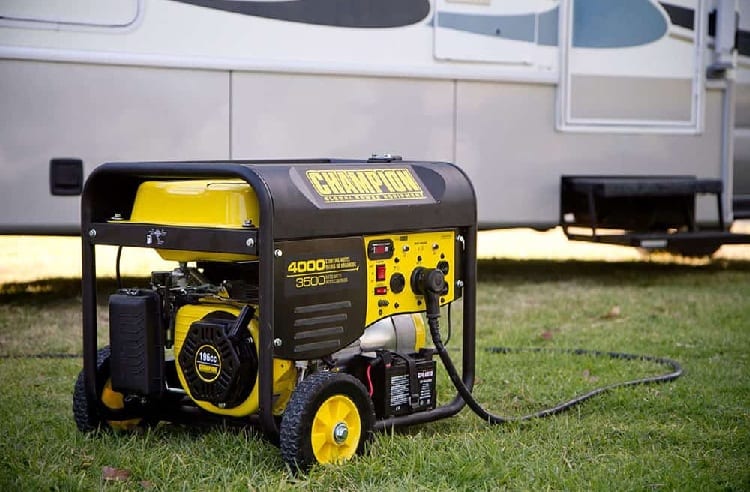When it comes to the essentials that every RV owner should have, a 12V deep cycle battery and a generator are right up there.
Better still, you can rely on the generator when you’re in a pinch and need to recharge the battery, but it’s not as straightforward as it seems.
How do you charge an RV battery with a generator?
A generator is better suited to providing a slow trickle of power and isn’t as effective as recharging a battery, so the best way to do it is with a battery charger that runs from the generator’s AC output.
If you don’t have one, you can still connect the battery to the generator but it will take longer to do.
Even if you don’t have the right battery charger, you still have a generator and battery that will work together.
With these two guaranteed sources of backup power and the knowledge of what steps to take, you’ll be prepared for anything.
This guide is designed to walk you through the steps so you can learn how to charge an RV battery with a generator and how to keep your battery humming along for years to come.
Contents
Safety First
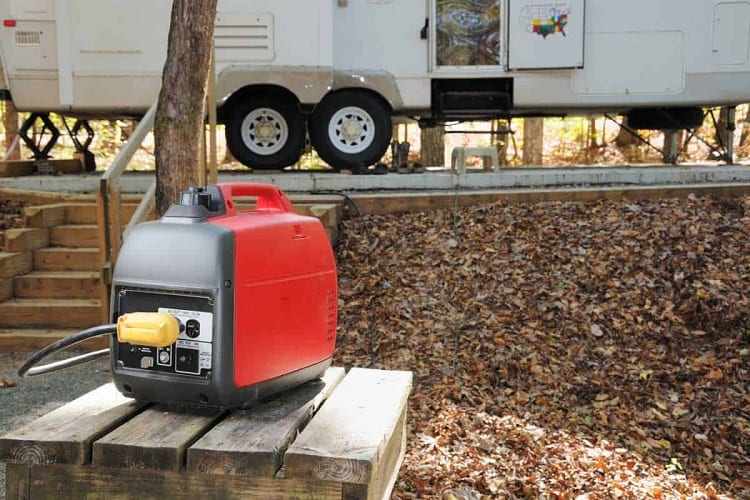
Many parts of RV ownership require a lot of thought and care when it comes to safety issues, and this is especially true when dealing with the brute power of a generator and a 12V battery.
Keep these safety tips in mind before you get started on the job and make sure you have a safe place to work:
- Always inspect the generator and battery thoroughly before beginning. If there are any signs of wear, damage, or corrosion, avoid using them. For a battery, you can clean the fuzzy corrosion off if it’s only minimal.
- Try to avoid working in extreme weather conditions, keep the battery and generator out of the rain, and don’t attempt to charge with temperatures below 40 degrees.
- When connecting wire leads, double-check the black and red on the battery and wires to make sure you’re using the right ones.
- Wear the correct protective gear when you’re working on your RV and with parts like generators and batteries. Remove any jewelry from your body before you begin.
- Avoid smoking anywhere near the RV, batteries, or generator. Don’t make a fire or have open flames anywhere in the area either.
- Replace the battery and generator after the recommended amount of time. Although it can be a costly investment, there’s too much risk of something going wrong when you’re working with damaged devices like this.
Can You Charge an RV Battery With a Generator?
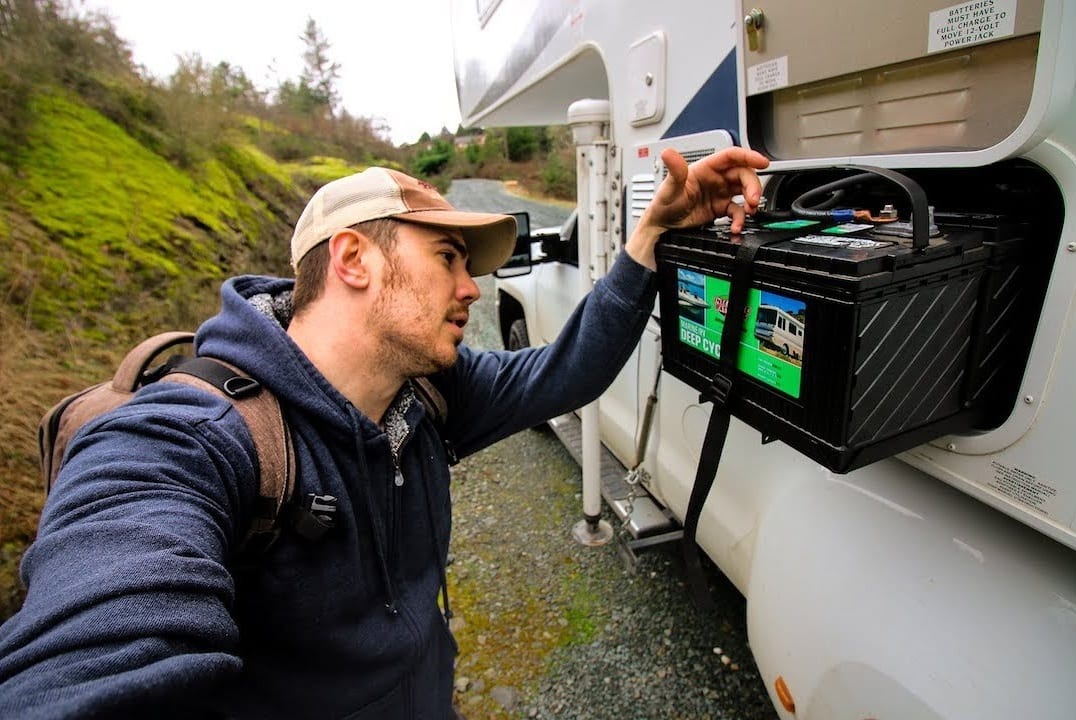
Although using a generator isn’t the ideal method of charging the RV’s 12V battery, it can still be done, but it’s best left for times when it’s really needed.
As most typical generators aren’t designed to provide this type of power, it can be hard, and for the fastest and most effective charging method, you’re better off using the shore power from an RV park or electricity at home.
However, if you’re in a bind and need to get the batteries charged up, you can still use a generator.
What makes it challenging is that these generators usually provide 8 Amps of power which takes some time to charge a standard 12V battery so it can be particularly taxing on the generator and the battery.
The best approach is to purchase a battery charger that you can connect directly to the generator’s AC output.
If you don’t have one of these on hand, you can still connect the battery to the generator and do it this way, but prepare for the process to take a lot longer and for the charge to not be as full.
Step by Step Guide to Charging an RV Battery
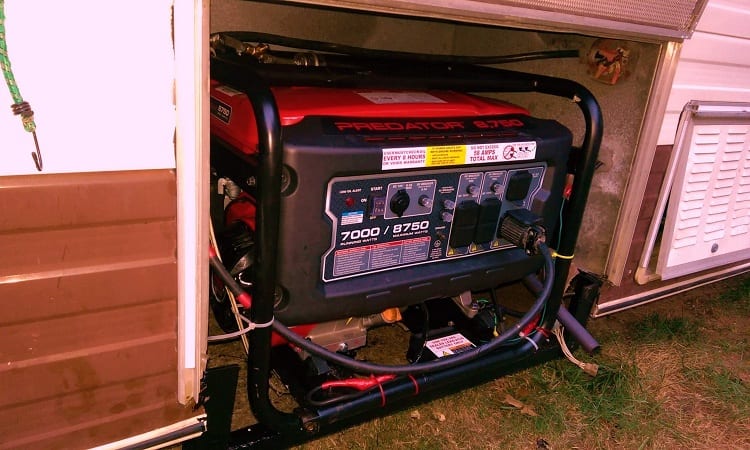
There’s not much to the task, as long as you have a 12V battery and generator ready for action. Follow these steps you get your battery charged using the power from your generator and keep your RV humming for longer.
- Start with a generator that is fully charged, or as close as possible. You might want to plug it into a power outlet or fill it with fuel so that it’s ready for the job at hand.
- Check all of the battery connections and look for signs of damage or corrosion. If you note any white, green or yellow fuzzy parts, this can easily be cleaned off with a baking soda and water solution and a toothbrush.
- If the battery isn’t already sealed, check the levels of electrolyte and if it needs topping up, do this with distilled water only. Reconnect the parts and seal the lid.
- Turn off anything that’s connected to the battery so it’s not using any charge during the process and keep it out of cold conditions or extreme heat.
- Plug the RV generator in and connect it to the battery to begin charging. Depending on the conditions, this can take up to four hours, and it may reach around 70% charge at best so don’t let it run too long.
Tips for a Long Battery Life
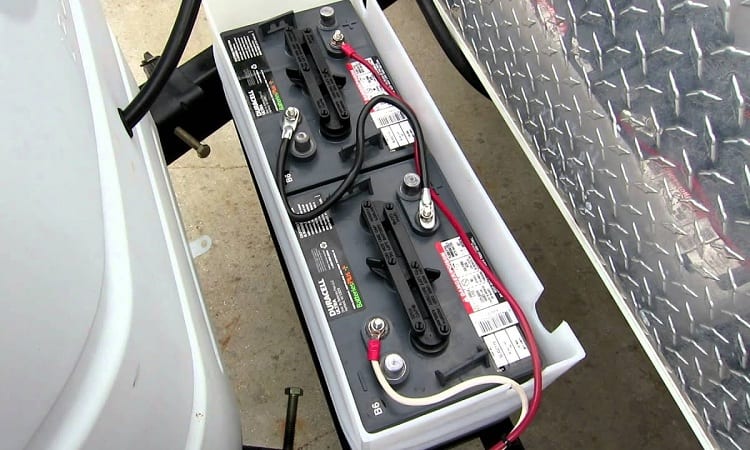
A deep cycle RV battery is a huge investment and it needs to be properly maintained so it can continue to provide your camper with reliable power.
These are just a few tips for prolonging a 12V battery’s life, whether it’s connected to your RV or used as a backup power source.
- Never let a battery go too long without being recharged. Recharging your discharged batteries should be done as soon as possible, as sulfation can occur which leads to small crystals forming on the plates.
- The depth of a battery’s discharge matters so make sure you’re not running it down as low as you can go. Keeping a battery at levels higher than 50% can extend its life significantly. A fully charged 12V battery is 12.7V, and it should never be allowed to discharge below 12V.
- Use a battery monitor or battery management system to get a clear picture of its health and how it’s being used. This simple investment can add a few more years of life to your batteries and give you some peace of mind as well.
- Batteries are sensitive to extreme temperatures so keep it out of the sunlight and don’t let it get too hot. If you’re in a warmer climate, you may need to check the water levels of the batteries more often, and only ever add distilled water to them.
- Invest in a proper battery charger or smart charge that can charge them more effectively and without being too harsh on them. These allow you to connect the battery directly to shore power for a more efficient charge.
Two Great Sources of Backup Power
When you’re living off the grid in your RV, you want to know you’ve got more than one source of backup power to get you through the rough times.
A quality deep cycle battery and generator fitted with the correct battery charger is all you need to achieve this peace of mind, so you’ll want to add them to your RV list today.
Related Questions
Learning how to charge a deep cycle battery with a generator is just one of the helpful tricks you’ll need to live the RV lifestyle successfully.
If you’ve still got questions about the role that a generator can play for your camping experience, we’ve answered some of the most popular ones to help you out.
What Size Generator Do I Need for RV?
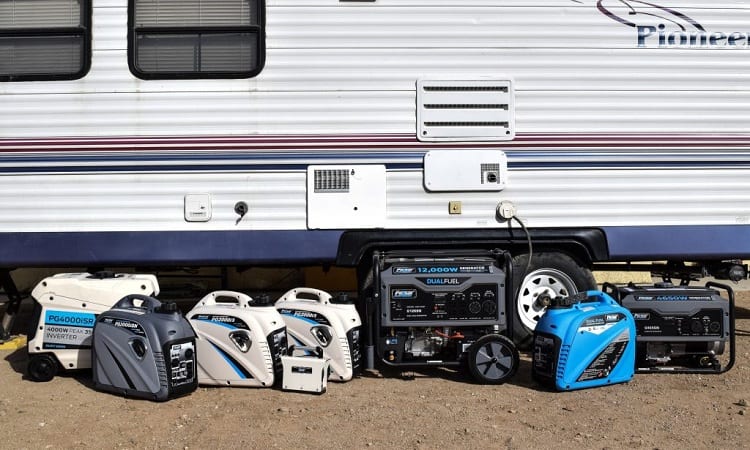
The best size for a camping generator used for an RV is at least 2000W with 2400W being the most popular size, and others ranging far beyond this.
This type of inverter generator will provide you with enough power for your basic needs for a few days, provided you are managing its use efficiently.
How Many Watts Do I Need for RV?
The watts used by your RV each day can help determine the load you need to cover, which will lead you to the right generator size.
Think about the bare minimum of appliances and electronics you need and add up their power requirements to get a better idea of how many you’ll require from a generator.
Can You Charge RV Battery While It’s Still Connected?
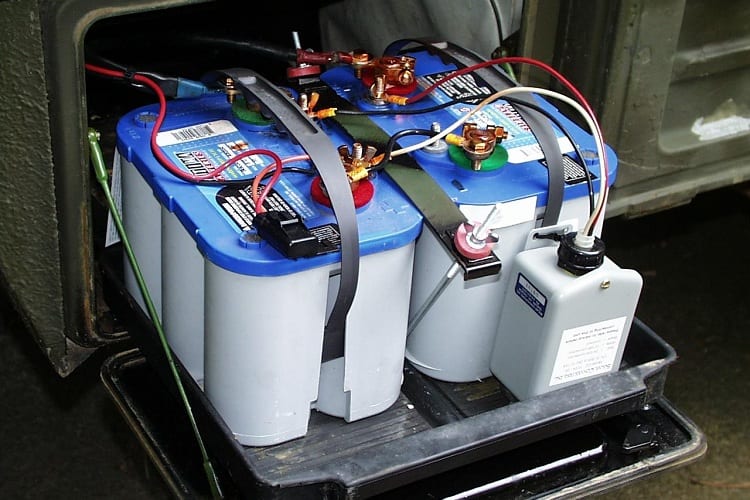
Although it is possible to charge an RV’s battery while it’s connected to an electrical outlet, it’s not recommended to do so.
Keeping it connected can drain the battery’s fluid and will reduce the effectiveness of the charging process, so it’s best to disconnect it from everything before you begin.
Resources:

